Neither apathetic nor disengaged
Filipino youth are confident they can spot disinformation, but worried others can’t
Young Filipinos are aware of the problem that misinformation and disinformation pose and are worried that many in the country are not equipped to deal with "fake news," a Foundation for Media Alternatives report released recently suggests.
Although the small survey only had 100 participants—FMA makes no claim that findings are representative of the entire country—and was conducted during the 2020 lockdown, the study and focus group discussions provide a snapshot of how young Filipinos (defined in the report as aged 15 to 35) see and deal with disinformation.
READ THE REPORT HERE:Disinformation Research Survey Report
Nearly all respondents, 99%, said that disinformation is a problem in the Philippines and many, 71%, said they encountered "news and information that misrepresent reality" every day.
Sixty-eight percent of respondents said they used tools to report disinformation while 52% used trusted fact-checking organizations and academia with access to platform data.
When they encounter disinformation, respondents said they do their own research and fact-checking but don't engage further to keep it from spreading (20%); they also report the content to the social media platform (20%) and block the account spreading it (14%).
Forty-three percent said they reach out to people they know who they see spreading disinformation to privately inform them about it.
They said, though, that confronting people, especially elder relatives, about sharing disinformation can be a source of stress.
RELATED:Getting Wise to Fake News
A majority of them also said they are either very confident (40%) or confident (49%) that they can identify misinformation and disinformation.
They had a lot less trust in their fellow Filipinos' ability to do so, though, with 56% saying they are "not very confident" and 33% they are "not at all confident" that other people can spot "news and information that misrepresent reality."
The top reason given was a "lack of critical thinking, reading comprehension, resources or access to references and ability to discern fact from fiction."
Interestingly, more respondents, 83%, saw raising awareness about the problem of disinformation as the most effective way to curb its adverse effects instead of, for example, legal restrictions and sanctions for sharing false information.
More respondents also rated promoting media and information literacy (87%) and encouraging critical thinking about sources of online information (87%) as "very important" policies against disinformation.

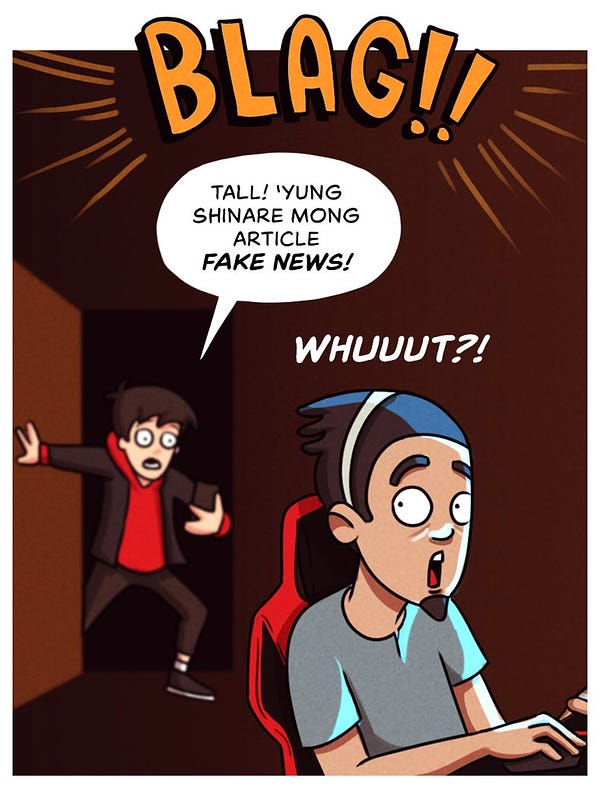

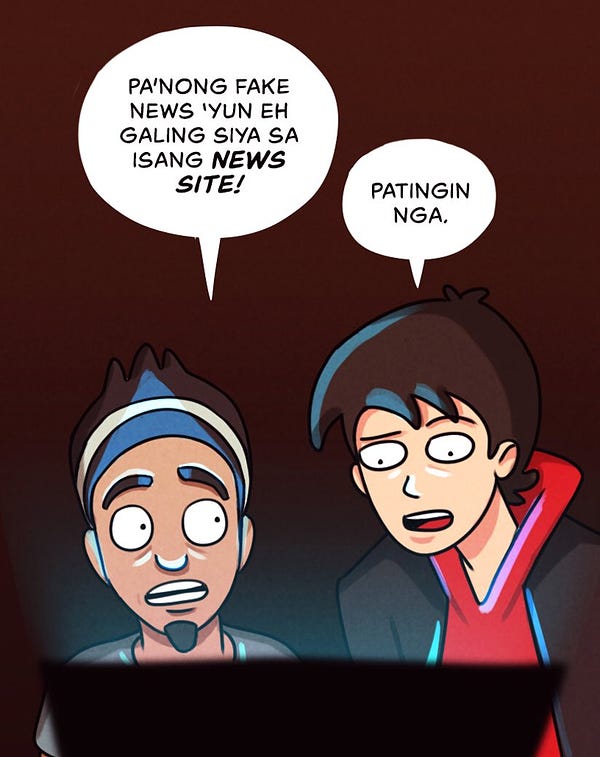
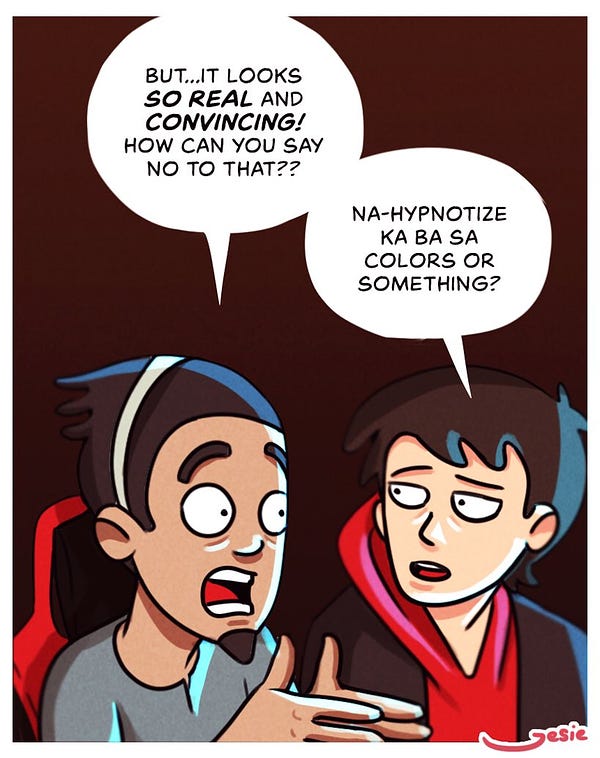
Respondents in FGDs said that education, including of educators themselves, would help promote media and information literacy, with some suggesting that this should start at an earlier age and can be done through creative content forms.
FMA, which has been engaging young Filipinos on digital rights and "fake news," has collaborated with komiks artists like Manix Abrera and Kevin Kalbo on misinformation, disinformation, and historical distortion.

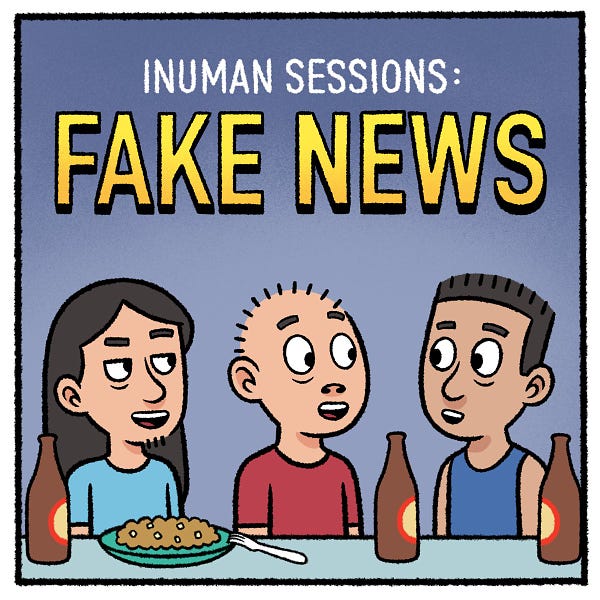

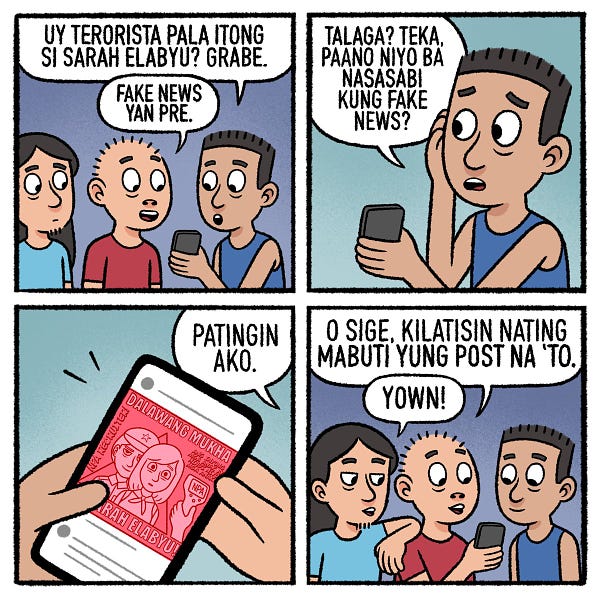

These initiatives are supported by insights from the FGDs, where "participants mentioned the use of memes as a medium to counter disinformation, as these are shareable and can trend."
The report also notes that "awareness campaigns using pop culture and creativity to bring to light social issues are also appreciated."
Although respondents in the FMA survey said the burden of countering disinformation falls mostly on the media, 72% also agreed that "netizens" should also act against ‘fake news.’
Among the ways respondents said they can do that is by "reporting fake news and learning how to fight disinformation" as well as "cultivating productive discourse and teaching [others] how to battle disinformation."
"From the survey responses and the FGDs, it is apparent how digitally savvy and aware the youth are when it comes to the topic of disinformation and misinformation," FMA writes, adding that respondents also recognize that other generations are not and could more easily fall for false news.
"It is crucial to equip the youth on how they can lead the engagements with older generations in order to help them understand and also counter such attacks."
One attempt to help them do that is an ongoing Media Civics Lab Seminar Workshop Series with the Break the Fake Movement—a Seminar-Workshop on Fake News and Disinformation will be held today—for Sangguniang Kabataan officials.
Through online courses, SK officials can learn fact checking as well as media and information literacy skills that they can use for localized media education training in their communities.
Due to the study limitations and how quickly the social media landscape has been changing, FMA says the report is at most a glimpse of youth perceptions on disinformation.
But even this peek shows that young Filipinos are better seen as proactive stakeholders than just kids staring at their phones.
ELSEWHERE ON THE INTERNET
A look at how news on the COVID-19 pandemic in US media has been more negative than in international news and scientific journals.
Researchers found that the grimmest news on the pandemic are the most read and most shared.
“Human beings, particularly consumers of major media, like negativity in their stories,” economics professor Bruce Sacerdote, who is leading the study, said. “We think the major media are responding to consumer demand.”
News in the Philippines is also grim, although a record 8,773 new cases on Thursday may have something to do with that. Still, some points to reflect on.Also, encrypted messaging apps are a great way for diaspora communities to keep in touch. But the intimacy and familiarity within chat groups these platforms have made them “a promising new avenue for the spread of disinformation,” the Brookings Institution writes.
Closer to home, a Senate bill seeking to define penalize red-tagging, or labeling someone a terrorist or communist rebel in the context of a counter-insurgency or anti-terrorism campaign. Although also done offline or by anonymous pages online, government networks have also engaged in the practice.
And a related piece on a National Commisison on Indigenous Peoples resolution discouraging the use of “Lumad” to refer to IP communities in Mindanao, even for IP communities that use the term to refer to themselves.



